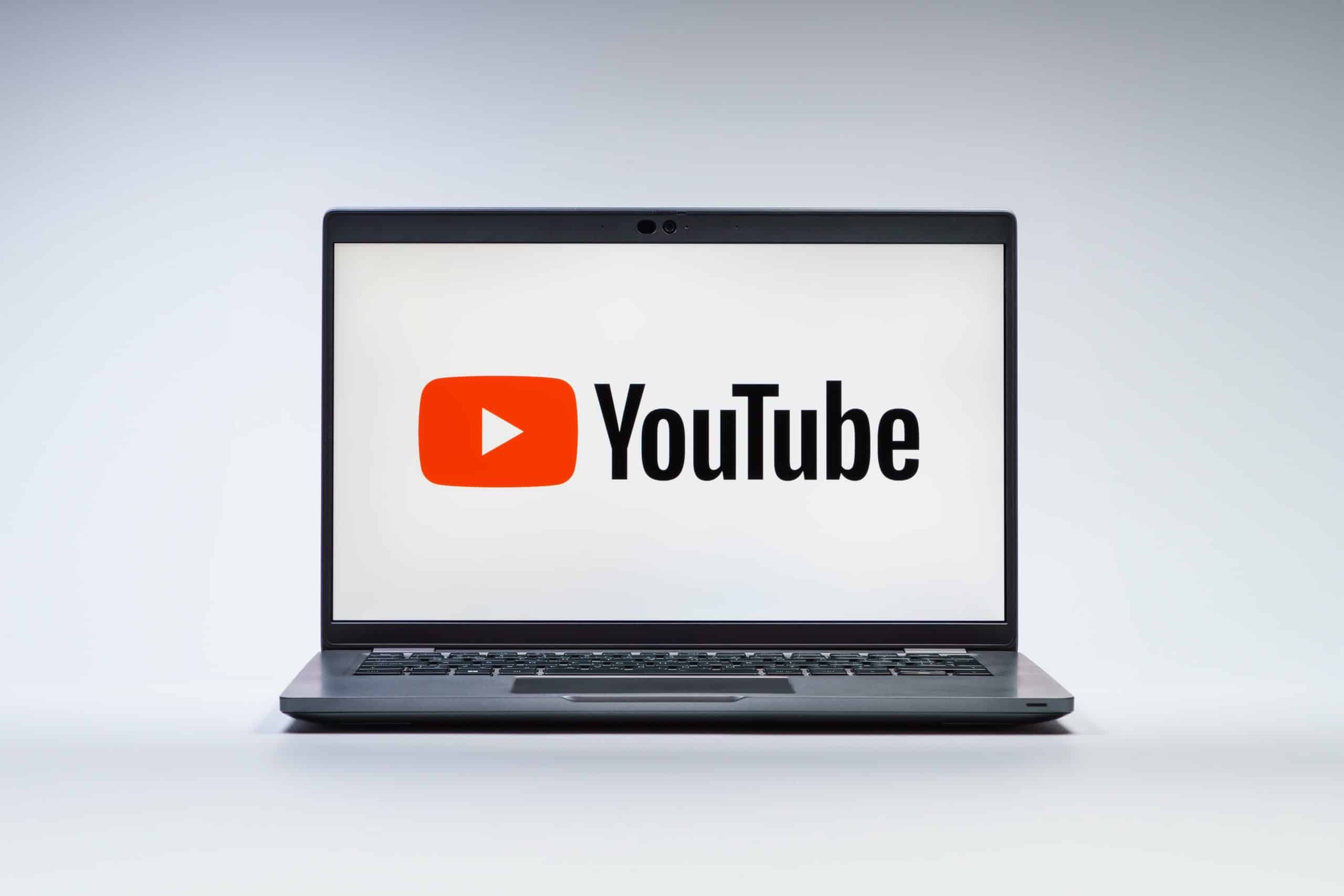- What Is YouTube?
- YouTube Campaign Setup
- What Are the Different Types of YouTube Ads?
- Tips for Maximizing Your YouTube Campaign Strategy
- YouTube Targeting and Audience Best Practices
- YouTube Ad Creative Best Practices
- YouTube Ads Measurement
- How to Optimize YouTube Ads Performance
- What Are Common Pitfalls to Avoid in YouTube Advertising?
- YouTube Campaign Budget
- YouTube Bidding Strategies
- YouTube Ad Compliance and Approval
- YouTube vs. Other Digital Marketing Platforms
- YouTube Trends to Know for 2025
- Key Takeaways
- Frequently Asked Questions (FAQs)
YouTube is one of the most powerful digital advertising platforms available today. With billions of users watching videos each month, it offers businesses a unique opportunity to reach targeted audiences through engaging visual content. Understanding YouTube Advertising, how it works, and how to set up effective campaigns can help drive better marketing results and support your overall business goals.
What Is YouTube?
YouTube is a global video-sharing platform owned by Google. It allows users to upload, view, share, and comment on videos across a range of topics, from entertainment to education. For advertisers, YouTube provides tools to reach potential customers with tailored video ads placed before, during, or after videos on the platform.
YouTube Campaign Setup
Setting up a YouTube ad campaign is a relatively straightforward process that occurs within Google Ads. Once you’ve set up your Google Ads accounts, the platform guides you step by step through creating your ads, choosing a target audience, and setting a budget. By following these steps, you can ensure your ads reach the right viewers effectively.
Add Your Business Information
Start by adding your business name and website to your Google Ads account. Linking existing Google accounts can help you receive tailored recommendations for your campaigns.
Choose a Campaign Goal
Choose from several campaign goals, such as purchases, lead form, and brand awareness. Select an objective that best matches what you want to achieve with your campaign. Choosing the right goal helps YouTube deliver your ads to the viewers most likely to act.
Create Your Ad
Upload your video and write headlines and a description to support it. Google Ads utilizes AI to test combinations of visuals and text to determine what works best for your audience.
Choose an Audience and Budget
During this step, you can set who will see your ads. This is done through various targeting settings, including demographic details, interests, keywords, and placements. Then, decide on your daily advertising budget. Google manages budget pacing to distribute your spend efficiently over time.
Launch Your YouTube Ad Campaign
Complete the process by reviewing your campaign setup and confirming payment details. Set up conversion tracking before launching the campaign to accurately measure the results. If everything looks good, publish your ad!
What Are the Different Types of YouTube Ads?
YouTube offers a range of ad formats to meet different business goals and viewer preferences. Choosing the right ad type for your campaign helps ensure your message reaches viewers in ways that align with how they consume content on the platform. Each format has unique features, costs, and placement options, so understanding them can help you maximize your budget.
Skippable In-Stream Ads
Skippable in-stream ads play before, during, and after videos on YouTube. Viewers have the option to skip these ads after five seconds. Advertisers are only charged when someone watches at least 30 seconds of the ad or interacts with it, whichever comes first. They’re a flexible option for delivering longer messages while keeping costs tied to actual engagement.
Non-Skippable In-Stream Ads
Non-skippable ads are up to 15 seconds long and must be watched in full before the viewer’s chosen video begins. Because viewers cannot skip these ads, they guarantee the complete delivery of your message. They are ideal for concise, impactful promotions where brand awareness is the primary goal and broad outreach is needed within a short timeframe.
Bumper Ads
Bumper ads are short, non-skippable ads that last up to six seconds. They are designed for quick, memorable messages that reinforce brand recognition without interrupting the viewer’s experience for too long. Bumper ads are effective when paired with longer ad formats in a campaign, as they help strengthen brand recall through repetition.
In-Feed Video Ads
In-feed video ads appear as thumbnail images with text in YouTube search results, alongside related videos, or on the YouTube homepage feed. When viewers click the thumbnail, they are taken to the video watch page to view the full content. This format encourages active engagement by allowing viewers to choose whether to watch your video based on their interest.
Masthead Ads
Masthead ads display at the top of the YouTube homepage feed and autoplay without sound for up to 30 seconds. Because of their prominent placement, masthead ads are reserved for campaigns that require wide visibility in a short time, such as major product launches or national campaigns.
YouTube Shorts Ads
Shorts ads appear within YouTube Shorts, the platform’s short-form video feed optimized for mobile viewing. These ads are best suited for quick, impactful messages that capture attention in fast-scrolling environments. Shorts ads should include strong visuals and concise messaging to stand out within seconds.
Tips for Maximizing Your YouTube Campaign Strategy
Using YouTube effectively involves more than simply launching ads: Implementing thoughtful strategies can enhance engagement, reduce cost, and amplify the impact of your campaigns. Focusing on creative variety, targeting, and calls to action can help your budget go further while reaching your goals.
Vary Your Ad Formats
Use a combination of ad formats to increase your reach. Each format engages viewers in different ways, so using multiple formats can help reinforce brand messaging across touchpoints.
Refresh Your Creatives Regularly
Update your ad creatives frequently to prevent ad fatigue among viewers. Refresh ads with new visuals, messaging, or calls to action to keep campaigns engaging and maintain performance over time.
Test Targeting Options
Try different targeting settings, such as demographics, interests, and keywords. Experimenting with these settings can help reveal which audience segments engage most with your ads. Review performance data and adjust targeting to ensure your campaigns remain effective.
Include Strong Calls to Action
Every ad should tell viewers what you want them to do next. Add direct and specific calls to action to increase the odds of viewers taking your desired action after watching your ad.
YouTube Targeting and Audience Best Practices
Targeting on YouTube enables you to reach viewers who are most likely to be interested in your products or services. Using the right targeting options ensures your ads are shown to people who fit your ideal customer profile, which can improve engagement rates and the return on your advertising investment.
Define Core Demographics
Narrow your audience using demographic filters such as age, gender, location, and language. Focus on viewers who match your target market to avoid spending your budget on people less likely to engage with your ads. Selecting the right demographics builds a strong foundation for the rest of your targeting.
Use Advanced Targeting
Reach viewers based on their interests, habits, and recent online behavior. Select affinity audiences to connect with individuals who share specific lifestyles or interests. Use custom intent audiences to target viewers who are actively researching topics or products related to your business. Applying these advanced options helps you engage people closer to making a purchase decision.
Expand Reach With Similar Audiences
Grow your audience by targeting similar audiences. YouTube identifies new viewers who share characteristics with your existing customers or website visitors. This feature helps you find more potential customers while maintaining relevance and targeting efficiency.
Use Target-Specific Placements
Choose specific YouTube channels, videos, or partner sites where you want your ads to appear. This ensures your ads show alongside content that matches your message and audience interests. Targeting placements strategically increases the chances that viewers will engage with your ads.
YouTube Ad Creative Best Practices
Creating strong ad creatives is essential for YouTube campaign success. Your ads should grab attention quickly, deliver your message clearly, and inspire viewers to act. Follow these best practices to improve your ad performance.
Capture Attention Quickly
Grab attention within the first few seconds. Use bold visuals, direct openings, and strong audio to make viewers want to keep watching. Start with a clear hook that connects directly to your product or message to prevent viewers from skipping your ad.
Keep Video Length Appropriate
Make sure your video length aligns with what viewers expect for each ad format. Short ads are ideal for quick reminders or brand awareness, while longer formats provide space to tell a more comprehensive story. Each YouTube ad type has time limits. Keep your videos within those time limits to ensure they run properly and keep viewers engaged without feeling rushed or dragged out.
Adapt Creatives for Each Format
Tailor your ad creatives for their specific placements. Use vertical videos for Shorts ads to fill the mobile screen and horizontal videos for in-stream ads to match standard viewing formats. Adjust visuals, text, and calls to action to ensure clarity and effectiveness on both desktop and mobile devices.
Write Clear Copy
Craft headlines and descriptions that are direct, benefit-focused, and easy to read. Avoid jargon or complex phrasing that may confuse viewers. Use simple language to highlight why your product or service matters to them. Always include a strong call to action to guide viewers to their next step.
Use AI to Optimize Creatives
Leverage AI tools within Google Ads to improve your ad creative performance. AI can analyze which headlines, visuals, and calls to action drive the best results with your target audience. Apply these insights to test new variations and refresh your ads regularly without relying solely on manual guesswork.
YouTube Ads Measurement
Measuring your campaign’s performance helps evaluate its effectiveness and identify areas for improvement. As digital video ad spending in the U.S. continues to rise, reaching an estimated $72.4 billion in 2025, it’s more important than ever to track key YouTube metrics to ensure your ads perform competitively.
View Rate
View rate measures the percentage of viewers who watch your ad after it appears. The average YouTube view rate is 31.9%. A higher view rate indicates that your ad is capturing attention effectively. If your view rate isn’t where you’d like it to be, test new hooks or visuals to make your ads more engaging.
Cost Per View
Cost per view (CPV) indicates the amount you pay when someone watches at least 30 seconds of your ad or interacts with it. The average CPV for YouTube ads is approximately $0.026.
Click-Through Rate
Click-through rate (CTR) measures how often viewers click your ad after watching it. The average CTR for YouTube ads is about 0.65%. A strong CTR suggests your message and call to action are motivating viewers to learn more or take the next step with your business.
Cost Per Thousand Impressions
Cost per thousand impressions (CPM) shows how much it costs to display your ad 1,000 times. Recent data shows YouTube CPMs cost around $3.53 on average. Monitoring your CPM helps you determine if your ads are reaching viewers cost effectively compared to broader industry averages.
Video Completion Rate
Video completion rate (VCR) shows the percentage of viewers who watch the entire ad. High completion rates indicate that your creative is maintaining attention from start to finish, strengthening brand recall and message delivery. If completion rates are low, adjust your pacing, hook, or messaging to improve engagement.
How to Optimize YouTube Ads Performance
Optimizing your YouTube ads can improve results and maximize your advertising budget. By continuously testing and adjusting your ads, your campaigns are more likely to stay effective as viewer behavior, competition, and costs change over time.
Review Data to Improve Creatives
Review your campaign performance data regularly to identify which ads drive the highest view rates, click-through rates, and conversions. Use these insights to update underperforming ads with new visuals, messages, or calls to action. Refreshing your creative based on data keeps your ads engaging and prevents ad fatigue.
Adjust Targeting for Better Results
Analyze which audience segments generate the best engagement and conversion rates. Refine your targeting to focus on these high-performing groups while excluding segments with low performance. This makes your budget more efficient by concentrating spending where it delivers the most impact.
Review Bidding Strategies Regularly
Check your bidding approach to ensure it aligns with your campaign goals and current market conditions. Switching between bidding types — such as cost per view and target cost per action — can help you improve cost efficiency and achieve better results, depending on your objectives.
What Are Common Pitfalls to Avoid in YouTube Advertising?
Even well-planned YouTube campaigns can underperform if you overlook common mistakes. Understanding these pitfalls will help you to create ads that engage viewers effectively and use your budget wisely.
Ignoring Mobile Optimization
Most YouTube viewers watch videos on their phones. Failing to design ads for mobile can lead to poor performance. Ensure your visuals are clear, your text is large enough to read on small screens, and your calls to action are easy to tap on mobile devices.
Keeping Ads Running Without Refreshing Them
Running the same ad creative for too long can cause ad fatigue, where viewers become accustomed to your content and stop engaging with it. Refresh your creatives regularly with new visuals, messages, or calls to action to maintain viewer interest and performance.
Using Weak Calls to Action
Ads that don’t clearly indicate what viewers should do next will fail to drive results. Include a direct and specific call to action with each ad to guide viewers to the next step.
Overloading Ads With Information
Including too much detail in a single ad can confuse viewers and weaken your message. Focus on one clear idea or benefit in each ad to keep it simple, direct, and easy for viewers to remember.
YouTube Campaign Budget
Your YouTube ads budget plays a key role in campaign planning and success. A clear budget helps control costs while ensuring your ads achieve their goals. When you understand how YouTube ad pricing works and the factors that influence it, you can create campaigns that reach the right viewers without overspending.
Understand What Affects Your Ad Costs
YouTube ad costs depend on several factors such as your bidding strategy, campaign goals, ad type, targeting options, audience size, and seasonal demand. For example, running ads during peak seasons like the holidays often costs more because of higher competition. Knowing these factors helps you plan your budget better and avoid surprises.
Allocate Budget to Match Campaign Goals
Consider your goals when deciding how to split your budget. If building brand awareness is the priority, consider investing more in formats like skippable in-stream ads to reach a wider audience. For driving quick conversions, dedicate a portion of your budget to Shorts ads or in-feed video ads to capture attention in shorter formats.
Set Daily Limits
Daily budgets keep your spending under control. Google Ads uses budget pacing to spread your spend strategically across the campaign period, ensuring your ads appear when viewers are most active. Regularly checking your budget settings ensures your campaigns remain aligned with your broader advertising goals.
Apply Frequency Caps to Improve Efficiency
Using frequency caps limits how often the same viewer sees your ads. This helps prevent overspending on repeated impressions that may not lead to additional results. Frequency caps also make your budget go further by reaching more viewers, rather than showing ads repeatedly to the same people.
YouTube Bidding Strategies
The bidding strategy determines how much you pay for ads and how effectively they reach your audience. Each approach supports different goals, so understanding these options helps you choose the best fit for your campaigns.
Use Cost Per View to Build Awareness
CPV bidding charges you only when someone watches at least 30 seconds of your ad or interacts with it. This approach is effective for building brand awareness because you only pay when viewers show real interest. It’s a good option if your main goal is to efficiently reach as many people as possible.
Choose Cost Per Thousand Impressions for Broad Reach
CPM bidding focuses on maximizing your ad’s visibility. You pay based on the number of times your ad is shown, regardless of whether viewers engage with it. Use CPM when your priority is to increase brand exposure and reach a large audience quickly.
Optimize Conversions With Target CPA
Target CPA bidding helps you drive specific actions, such as website sign-ups or purchases. You set the average amount you’re willing to pay for a conversion, and Google Ads automatically adjusts bids to get the best results within that goal. This strategy is most effective when you have a clear conversion objective and want to control acquisition costs.
YouTube Ad Compliance and Approval
Before launching a YouTube ad campaign, ensure your ads comply with YouTube’s policies and approval requirements. Following these guidelines helps prevent delays, disapprovals, or account issues that can impact your campaign results.
Copyright Violations
Use only music, images, video, and other creative assets you own or have licensed properly. Uploading ads with copyrighted materials you don’t have the rights to can lead to rejections or even account penalties. Double-check usage rights for every asset included in your ads before submitting them for review.
Content Policies
Review YouTube’s advertising policies to ensure your ads do not include misleading claims, prohibited products, or restricted topics. For example, ads cannot promote certain healthcare products, adult content, or financial schemes that violate platform standards. Stay up to date with these guidelines to avoid rejections and keep your campaigns running smoothly.
Approval Reviews
After submitting your ads, YouTube reviews them to confirm compliance with all guidelines. Most ads are approved within one business day, but more complex content may take longer. Plan ahead for the approval window to ensure your campaigns launch on time, without unexpected delays.
YouTube vs. Other Digital Marketing Platforms
YouTube stands out from other digital marketing channels because it combines the power of video storytelling with precise targeting options. Unlike static image or text ads, YouTube ads engage viewers through sound, motion, and narrative, making it easier to build emotional connections and explain complex ideas clearly.
Its integration with Google Ads allows you to target specific demographics, interests, and search behaviors. You can reach viewers while they watch content that entertains or educates them. Reaching people in these moments increases your chances of engaging those already interested in similar topics or products.
When used in conjunction with display advertising on the open web, as well as search and social media ads, YouTube adds a strong visual component to your marketing strategy. It helps reinforce your brand message across multiple platforms and moves viewers closer to the action.
YouTube Trends to Know for 2025
YouTube continues to grow as both a content platform and an advertising channel. Changes in how people watch videos and interact with brands are creating new opportunities for marketers in 2025. Awareness of these trends can help you maintain a competitive edge in a crowded space.
- YouTube Shorts growth: Shorts now average over 200 billion views daily, nearly a 185% increase since mid-2023, making them a dominant format for short-form, mobile-first content.
- New AI tools: YouTube is rolling out Veo 3 to help creators generate AI-enhanced videos for YouTube Shorts. While the tool is designed for creators, it raises the bar for video quality. Brands and advertisers must consider their creative strategy to stay competitive.
- Follow-on views optimization: YouTube’s Demand Gen campaigns now include optimization for follow-on views. This targets people likely to watch more videos from your channel after seeing an ad, helping brands grow organic engagement.
Key Takeaways
YouTube advertising offers a powerful way to reach targeted audiences through engaging video content. Your ads perform best when you know what you want to achieve and create messages that resonate with viewers. Review your campaigns regularly to measure results and identify areas for improvement. Stay up-to-date on trends and adjust your strategies as needed to keep your YouTube ads competitive and drive better results for your business.
Frequently Asked Questions (FAQs)
How does video SEO relate to YouTube ads?
Video SEO improves the visibility of your videos in YouTube search results and suggested videos. Optimizing titles, descriptions, and other elements makes it easier for people to find your content organically. Even if you run ads, good video SEO supports your campaigns by building stronger ad placement within YouTube’s algorithm, increasing overall views and reinforcing your brand presence.
Why was my YouTube ad rejected?
YouTube rejects ads for several reasons, including policy violations, the use of copyrighted content without permission, or the inclusion of misleading claims. Common issues include promoting restricted products, failing to meet technical requirements, and using unlicensed music. Before resubmitting, review YouTube’s ad policies and make any necessary changes.
How can I use YouTube Shorts for advertising?
YouTube Shorts are short-form videos up to 60 seconds long, designed for quick viewing on mobile devices. To advertise effectively with Shorts, create videos that feature strong hooks within the first few seconds and maintain clear, direct messaging. Use captions or on-screen text to reinforce your call to action since many viewers watch without sound. Shorts ads are best for short, impactful promotions that grab attention quickly.



